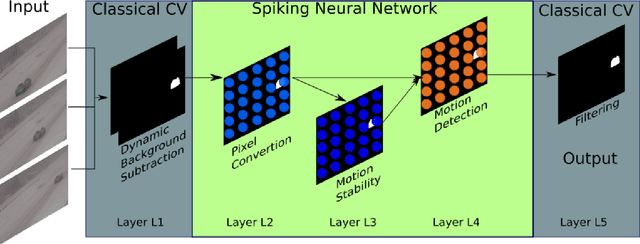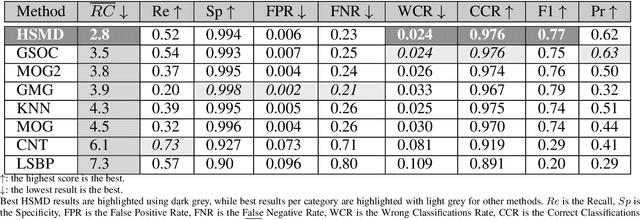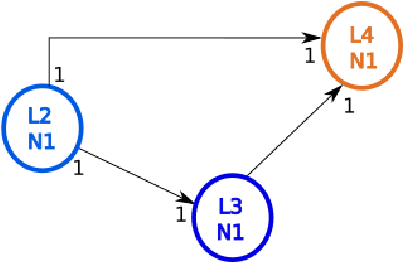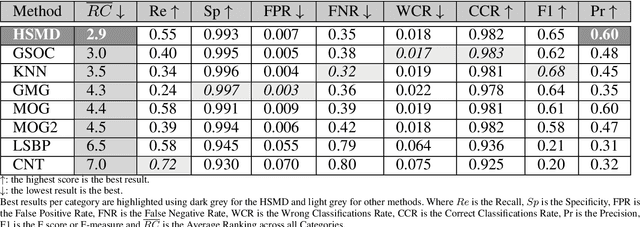Joao Filipe Ferreira
HSMD: An object motion detection algorithm using a Hybrid Spiking Neural Network Architecture
Sep 09, 2021



Abstract:The detection of moving objects is a trivial task performed by vertebrate retinas, yet a complex computer vision task. Object-motion-sensitive ganglion cells (OMS-GC) are specialised cells in the retina that sense moving objects. OMS-GC take as input continuous signals and produce spike patterns as output, that are transmitted to the Visual Cortex via the optic nerve. The Hybrid Sensitive Motion Detector (HSMD) algorithm proposed in this work enhances the GSOC dynamic background subtraction (DBS) algorithm with a customised 3-layer spiking neural network (SNN) that outputs spiking responses akin to the OMS-GC. The algorithm was compared against existing background subtraction (BS) approaches, available on the OpenCV library, specifically on the 2012 change detection (CDnet2012) and the 2014 change detection (CDnet2014) benchmark datasets. The results show that the HSMD was ranked overall first among the competing approaches and has performed better than all the other algorithms on four of the categories across all the eight test metrics. Furthermore, the HSMD proposed in this paper is the first to use an SNN to enhance an existing state of the art DBS (GSOC) algorithm and the results demonstrate that the SNN provides near real-time performance in realistic applications.
 Add to Chrome
Add to Chrome Add to Firefox
Add to Firefox Add to Edge
Add to Edge